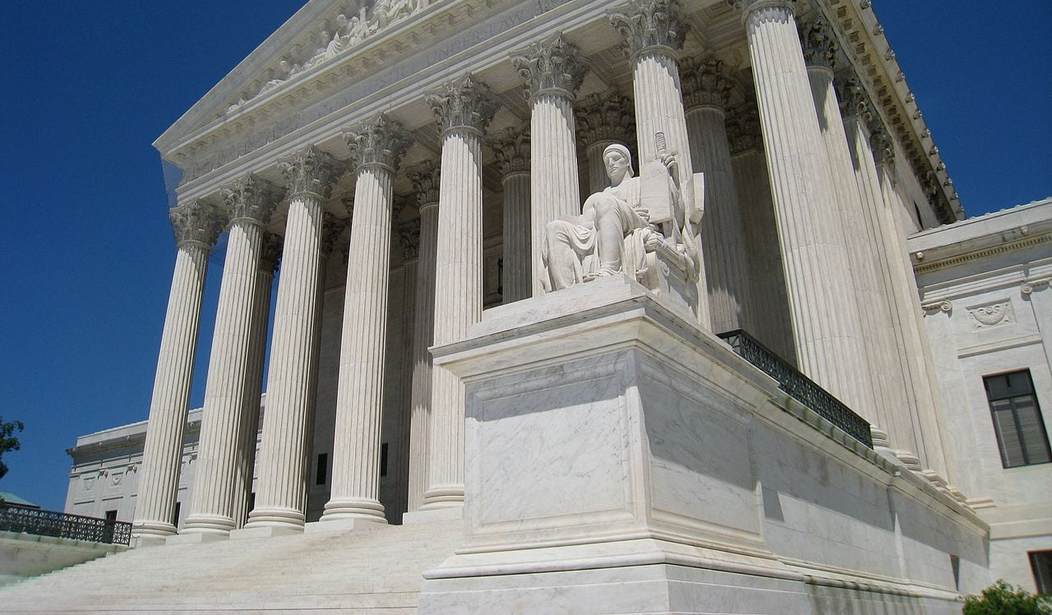It’s rare that a Supreme Court decision provides hints of impatience or frustration among the justices with members of lower federal courts, but that was the case late Friday with Ritesh Tandon, et al. v. Gavin Newsom (2021).
Consider the concluding paragraph(s) of the 5-4 decision in which the conservative majority struck down, yet again, the infamous Ninth Circuit’s decisions upholding California Gov. Gavin Newsom’s regulatory monstrosity of COVID-19 lockdown measures against religious assembly:
This is the fifth time the Court has summarily rejected the Ninth Circuit’s analysis of California’s COVID restrictions on religious exercise. See Harvest Rock Church v. Newsom, 592 U. S. ___ (2020); South Bay, 592 U. S. ___; Gish v. Newsom, 592 U. S. ___ (2021); Gateway City, 592 U. S. ___.
It is unsurprising that such litigants are entitled to relief. California’s Blueprint System contains myriad exceptions and accommodations for comparable activities, thus requiring the application of strict scrutiny.
And historically, strict scrutiny requires the State to further ‘interests of the highest order’ by means ‘narrowly tailored in pursuit of those interests.’ Church of Lukumi Babalu Aye, Inc. v. Hialeah, 508 U. S. 520, 546 (1993) (internal quotation marks omitted). That standard ‘is not watered down’; it ‘really means what it says.’” Ibid. (quotation altered).
That is about as decisive a repudiation as the justices could express short of something along the lines of “Read Our Lips: The First Amendment means what it says about religious freedom. And so do we! You got it?”
Recommended: COVID Tyrant Newsom Can’t ‘Move the Goalposts’ on Religious Freedom, Supreme Court Rules
The same impatience is clear throughout the decision, beginning with the first paragraph of the decision’s analysis: “The Ninth Circuit’s failure to grant an injunction pending appeal was erroneous. This Court’s decisions have made the following points clear.”
The majority then walked the Ninth Circuit through a Constitution 101 explanation of what the lower court should not require being reminded:
“First, government regulations are not neutral and generally applicable, and therefore trigger strict scrutiny under the Free Exercise Clause, whenever they treat any comparable secular activity more favorably than religious exercise … It is no answer that a State treats some comparable secular businesses or other activities as poorly as or even less favorably than the religious exercise at issue.”
In other words, the Free Exercise Clause — that’s the one in the First Amendment that declares “Congress shall make no law respecting an establishment of religion, or prohibiting the free exercise thereof …” — requires a demonstration of strict scrutiny every time government claims it must limit religious exercise. And, oh by the way, you don’t get off the hook for violating religious freedom by treating some other institution as badly or even worse.
Then there is this from the high court’s conservative majority:
“Second, whether two activities are comparable for purposes of the Free Exercise Clause must be judged against the asserted government interest that justifies the regulation at issue … Comparability is concerned with the risks various activities pose, not the reasons why people gather.”
In other words, it should be of no consequence to government what might be the particular nature of the religious assembly — which in this specific case involved home-based Bible studies — because the only permissible issue to consider in comparing activities proposed for regulation is their comparative risks.
Recommended: Supreme Court Won’t Let a College off the Hook for Suppressing Free Speech
Next comes the clincher that the Ninth Circuit judges no doubt understood but about which the members of the majority of the Supremes took care to remind them, publicly:
Third, the government has the burden to establish that the challenged law satisfies strict scrutiny. To do so in this context, it must do more than assert that certain risk factors ‘are always present in worship, or always absent from the other secular activities’ the government may allow …
Instead, narrow tailoring requires the government to show that measures less restrictive of the First Amendment activity could not address its interest in reducing the spread of COVID.
Where the government permits other activities to proceed with precautions, it must show that the religious exercise at issue is more dangerous than those activities even when the same precautions are applied. Otherwise, precautions that suffice for other activities suffice for religious exercise too.
That’s a textbook description of how to apply strict scrutiny: Bureaucrats and elected officials alike must demonstrate beyond question the existence of a genuine threat to the public that can only be met with a minimal limitation on the requirements of the Free Exercise Clause.
But the best part of Friday night’s decision is when the majority tells Newsom and his bureaucrats they cannot continue to play regulatory whack-a-mole games with the courts regarding the exercise of religious freedom during the COVID lockdown.
Regulatory whack-a-mole is simply agreeing to withdraw a challenged regulation that clearly violates the Free Exercise Clause before a judge so rules, but then issuing a new version that really isn’t new at all, except perhaps in cosmetic word choices. The Court majority described this game as “moving the goalposts.”
Thus, the five conservative Supremes warned:
Fourth, even if the government withdraws or modifies a COVID restriction in the course of litigation, that does not necessarily moot the case. And so long as a case is not moot, litigants otherwise entitled to emergency injunctive relief remain entitled to such relief where the applicants ‘remain under a constant threat’ that government officials will use their power to reinstate the challenged restrictions.
… although California officials changed the challenged policy shortly after this application was filed, the previous restrictions remain in place until April 15th, and officials with a track record of ‘moving the goalposts’ retain authority to reinstate those heightened restrictions at any time.
The five conservatives include Justices Clarence Thomas, Brett Kavanaugh, Samuel Alito, Neil Gorsuch, and Amy Coney Barrett.
Recommended: Lefty Law Profs See Handmaid’s Tale Lurking Behind Supreme Court Religious Freedom Ruling
Note that Chief Justice John Roberts again joined with liberals Elena Kagan, Stephen Breyer, and Sonia Sotomayor against the Free Exercise Clause concerning religious freedom.
Former Justice David Souter must be so proud. You recall Souter, the whom guy John Sununu, President George H.W. Bush’s White House Chief of Staff, promised “would be a home run for conservatives.”










Join the conversation as a VIP Member